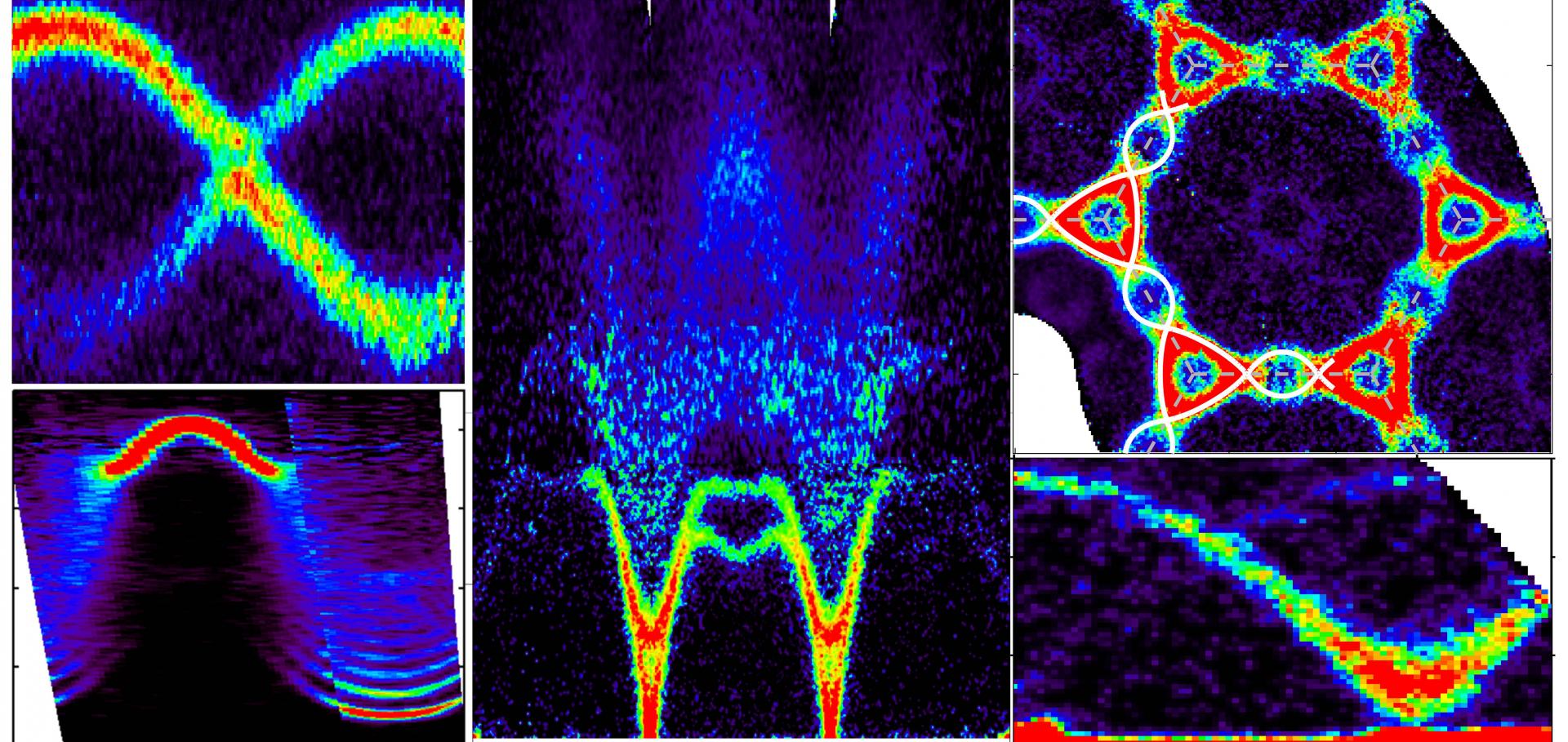Order-by-disorder from bond-dependent exchange and intensity signature of nodal quasiparticles in a honeycomb cobaltate.
Abstract:
Recent theoretical proposals have argued that cobaltates with edge-sharing octahedral coordination can have significant bond-dependent exchange couplings thus offering a platform in 3d ions for such physics beyond the much-explored realisations in 4d and 5d materials. Here we present high-resolution inelastic neutron scattering data within the magnetically ordered phase of the stacked honeycomb magnet CoTiO<sub>3</sub> revealing the presence of a finite energy gap and demonstrate that this implies the presence of bond-dependent anisotropic couplings. We also show through an extensive theoretical analysis that the gap further implies the existence of a quantum order-by-disorder mechanism that, in this material, crucially involves virtual crystal field fluctuations. Our data also provide an experimental observation of a universal winding of the scattering intensity in angular scans around linear band-touching points for both magnons and dispersive spin-orbit excitons, which is directly related to the non-trivial topology of the quasiparticle wavefunction in momentum space near nodal points.Studies on Novel Yb-based Candidate Triangular Quantum Antiferromagnets: Ba3YbB3O9 and Ba3YbB9O18
Bond-dependent exchange, order-by-disorder and nodal quasiparticles' intensity signature in a honeycomb cobaltate
Abstract:
Recent theoretical proposals have argued that cobaltates with edge-sharing octahedral coordination can have significant bond-dependent exchange couplings thus offering a platform in 3d ions for such physics beyond the much-explored realizations in 4d and 5d materials. Here we present high-resolution inelastic neutron scattering data within the magnetically ordered phase of the stacked honeycomb magnet CoTiO3 revealing the presence of a finite energy gap and demonstrate that this implies the presence of bond-dependent anisotropic couplings. We also show through an extensive theoretical analysis that the gap further implies the existence of a quantum order-by-disorder mechanism that, in this material, crucially involves virtual crystal field fluctuations. Our data also provide an experimental observation of a universal winding of the scattering intensity in angular scans around linear band-touching points for both magnons and dispersive spin-orbit excitons, which is directly related to the non-trivial topology of the quasiparticle wavefunction in momentum space near nodal points. The deposited data package contains neutron powder diffraction and single crystal inelastic neutron scattering data to probe the magnetic ordering and dynamics. The zip archive contains the data in the format of multi-column ASCII files, a README.txt that explains the content of all the files and matlab code to plot the data in all the files, together with relevant RGB colourmap.Quantifying and controlling entanglement in the quantum magnet Cs2CoCl4
Abstract:
This data archive accompanies the paper "Quantifying and controlling entanglement in the quantum magnet Cs2CoCl4" by Pontus Laurell, Allen Scheie, Chiron J. Mukherjee, Michael M. Koza, Mechtild Enderle, Zbigniew Tylczynski, Satoshi Okamoto, Radu Coldea, D. Alan Tennant, and Gonzalo Alvarez, https://arxiv.org/abs/2010.11164 and Phys. Rev. Lett. (in print 2021).
The archive contains source data and plot files to replicate all figures in the article and its supplemental material, including processed experimental inelastic neutron scattering data and theoretical DMRG results. All figures can be compiled using LaTeX as described in detail in the README.txt file contained in the archive.
The lack of methods to experimentally detect and quantify entanglement in quantum matter impedes our ability to identify materials hosting highly entangled phases, such as quantum spin liquids. We thus investigate the feasibility of using inelastic neutron scattering (INS) to implement a model-independent measurement protocol for entanglement based on three entanglement witnesses: one-tangle, two-tangle, and quantum Fisher information (QFI). We perform high-resolution INS measurements on Cs2CoCl4, a close realization of the S=1/2 transverse-field XXZ spin chain, where we can control entanglement using the magnetic field, and compare with density-matrix renormalization group calculations for validation. The three witnesses allow us to infer entanglement properties and make deductions about the quantum state in the material. We find QFI to be a particularly robust experimental probe of entanglement, whereas the one- and two-tangles require more careful analysis. Our results lay the foundation for a general entanglement detection protocol for quantum spin systems.


